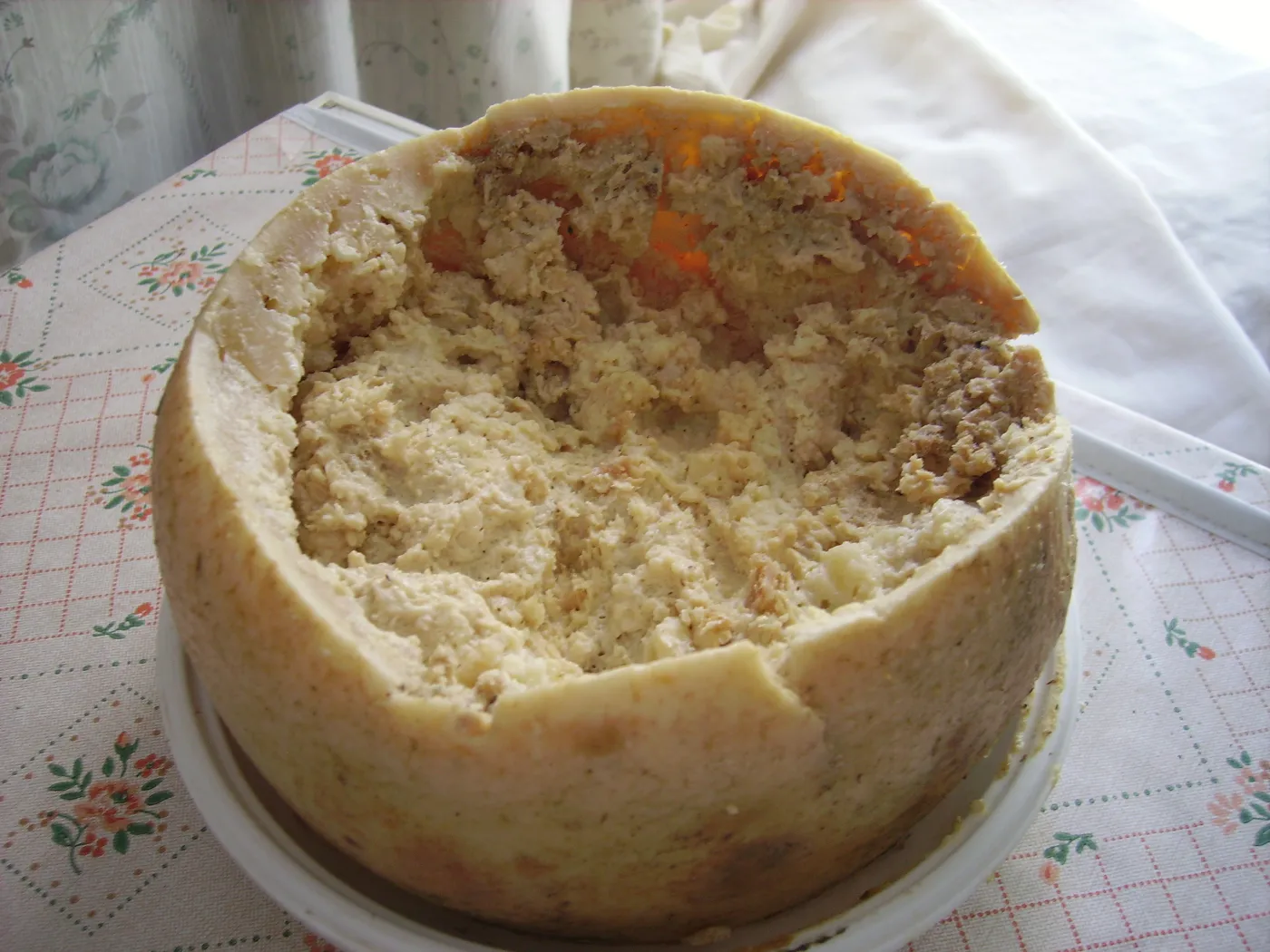A Forbidden Sardinian Delicacy: Casu Marzu

Shardan, CC BY-SA 2.5, via Wikimedia Commons
Dive into the daring world of Casu Marzu, a traditional Sardinian cheese that pushes the boundaries of conventional gastronomy with its distinctive and controversial use of live larvae. It's literally alive.
Overview
Casu Marzu, literally translating to "rotten cheese," is a traditional Sardinian cheese noted for its very unique method of fermentation. It originates from the beautiful island of Sardinia, Italy, and has been a part of the local diet for centuries, particularly among shepherds and rural communities.
Time Period
While the exact origins of Casu Marzu are not documented, it is a practice that has likely been around as long as pecorino cheese has been made on the island, which dates back hundreds of years. The cheese gained international notoriety and remains a subject of both fascination and disgust.
Legal Status
Due to health regulations, Casu Marzu has faced legal challenges and has been declared illegal in the EU. However, it continues to be made and consumed on the island as part of a vibrant tradition, often circumventing laws through local and private consumption.
Recipe
Ingredients
- 1 whole wheel of Pecorino Sardo cheese
- Cheese fly larvae (Piophila casei)
Tools
- Cheese cloth
- Knife
- Wooden cover
- Container for aging
Instructions
-
Prepare the Pecorino:
Begin with a wheel of Pecorino Sardo, a sheep’s milk cheese that is native to Sardinia. The cheese should be semi-aged, so it's firm but not too hard. -
Initiate Fermentation:
Remove the top rind to expose the inner cheese. This opening allows flies (specifically the cheese fly, Piophila casei) to lay eggs in the cheese. -
Larval Development:
Once the eggs are laid, they will hatch into larvae. These maggots begin to eat through the cheese, excreting enzymes that promote a level of fermentation and decomposition beyond typical aging processes. -
Aging Process:
Cover the cheese loosely with a cheese cloth and place it in a dark, cool environment, such as a cellar or a cool pantry. The larvae's activity will soften the cheese and create a creamy texture. This process can take several months. -
Consumption:
Casu Marzu is traditionally eaten with the live larvae still present in the cheese, which can jump when disturbed. Therefore, diners often shield their eyes while taking bites. The cheese is typically spread on moistened Sardinian flatbread and paired with a strong red wine. -
Safety Note:
Be aware that consuming Casu Marzu can pose health risks, including allergic reactions and intestinal larval infection. It is advised to consume this cheese with knowledge of these risks and preferably under the guidance of someone experienced in its preparation and consumption.
Serving Suggestions
Casu Marzu is more than just a food item; it's a bold expression of Sardinian culture. It is usually served in a convivial atmosphere, surrounded by friends and family, often during festivals or large gatherings.
Cultural Significance
Despite—or perhaps because of—its controversial nature, Casu Marzu holds a place of pride in Sardinian culture, symbolizing a fierce adherence to tradition and local customs that defy modern sensibilities and regulations.
Enjoy this dive into a truly unique culinary adventure that tests the limits of gastronomy and tradition!
